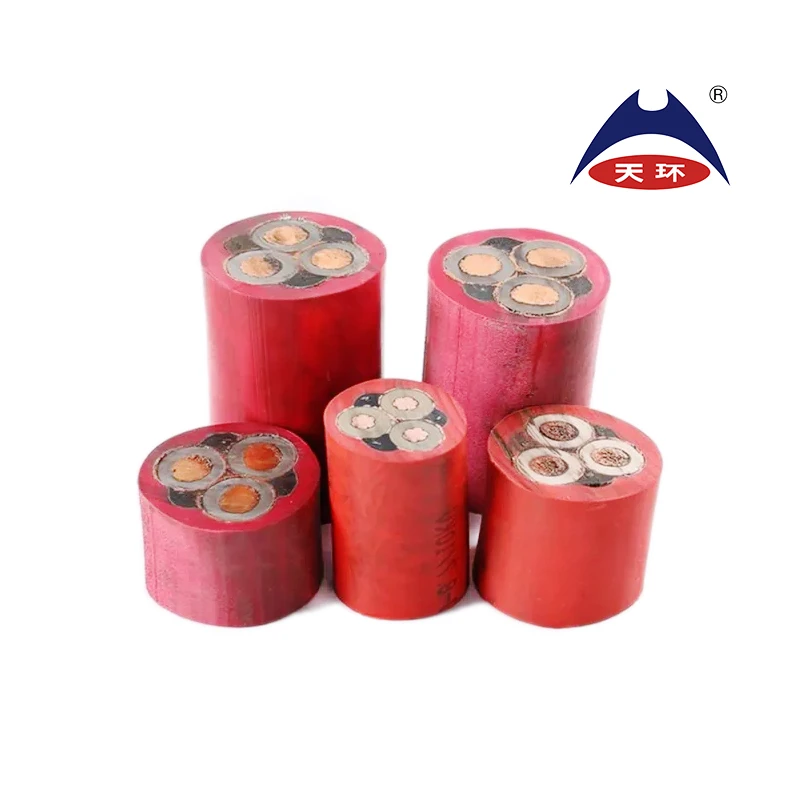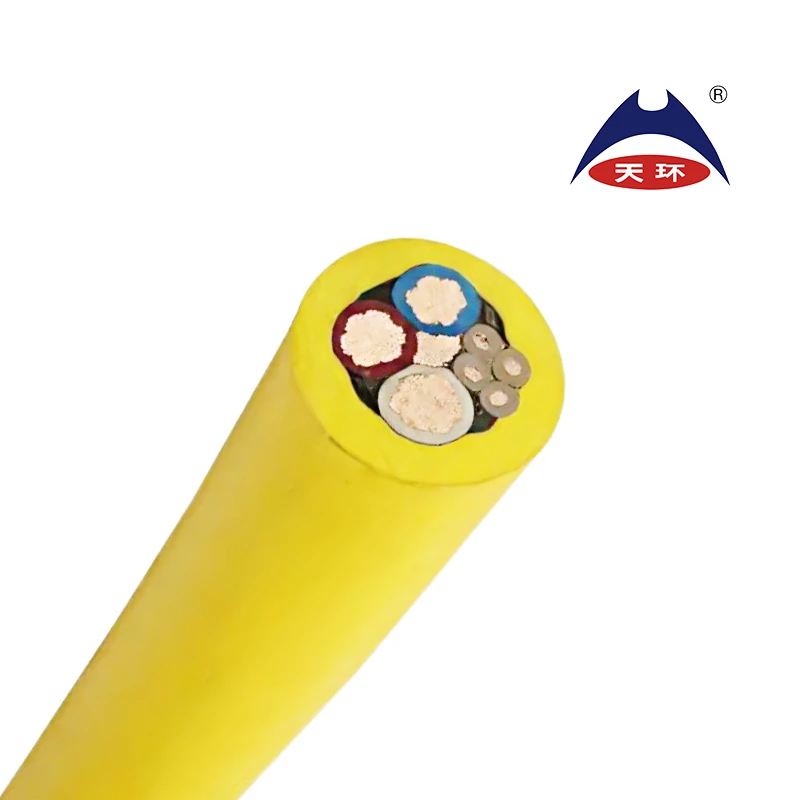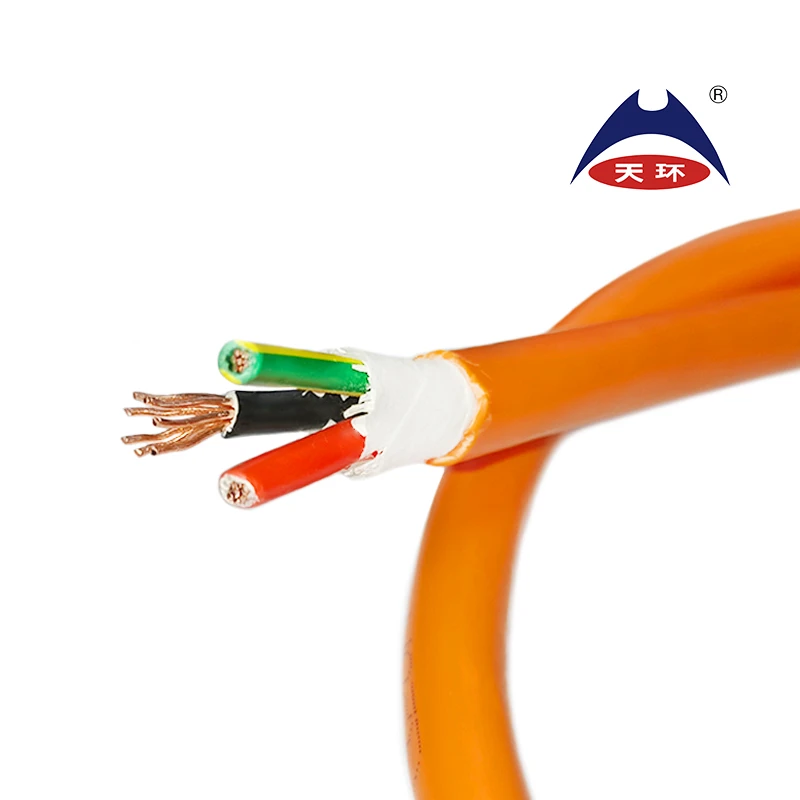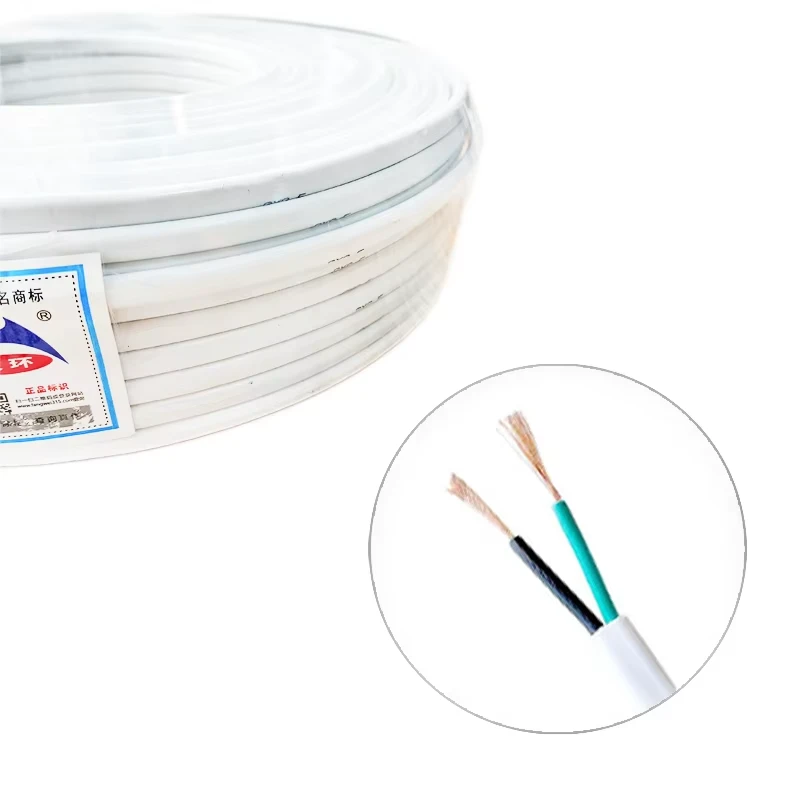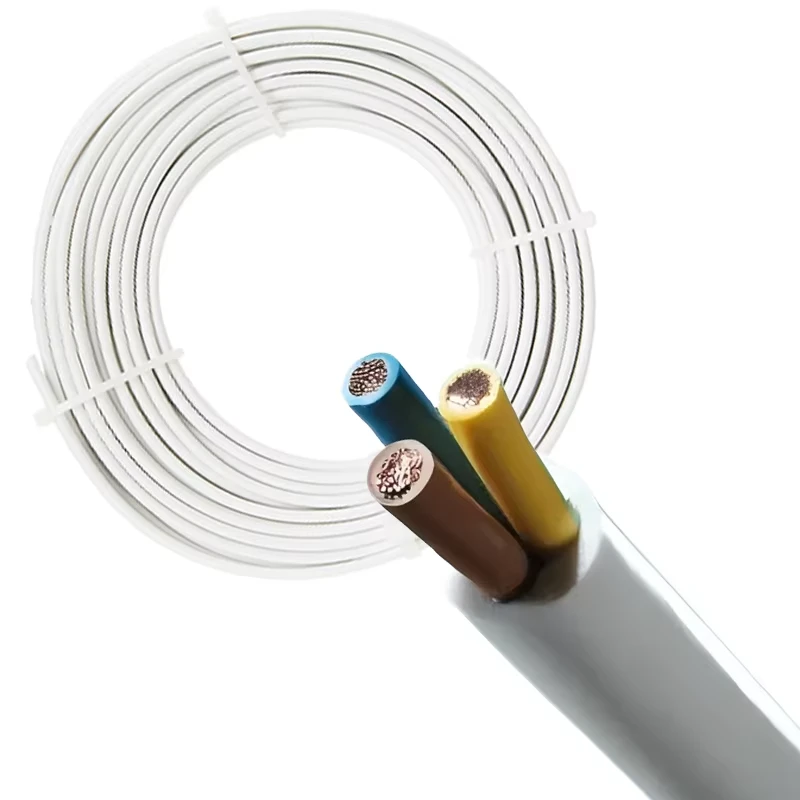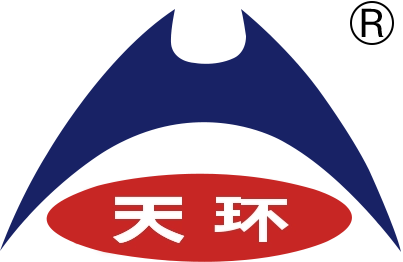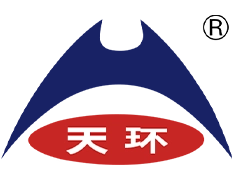
Acar Cable Manufacturer - High Quality & Wholesale Supplier
The Advanced Engineering Behind ACAR Cables: An Industry Overview
In the highly demanding realm of modern power transmission and distribution, the choice of conductor material is paramount, directly influencing grid efficiency, reliability, and long-term operational costs. Among the various aerial conductor technologies, acar cable manufacturer stand out as a superior solution due to their unique composite structure. ACAR, or Aluminium Conductor Alloy Reinforced Cable, represents a significant advancement over traditional conductors like ACSR (Aluminum Conductor Steel Reinforced) by utilizing high-strength aluminum alloy wires instead of steel for reinforcement. This innovative design capitalizes on the benefits of both high-purity aluminum for exceptional electrical conductivity and a specialized aluminum alloy for enhanced mechanical strength and improved sag characteristics. This configuration leads to a lighter, stronger cable with superior corrosion resistance and higher ampacity compared to ACSR, making it an ideal choice for overhead lines where optimized performance and durability are critical. The inherent flexibility and reduced weight of ACAR cables also contribute to easier installation and lower structural load on towers, translating into tangible cost savings and increased network resilience for utility providers and industrial clients globally.
The demand for high quality acar cable has seen a steady rise, driven by the global push towards smarter grids, renewable energy integration, and the need to upgrade aging infrastructure. Industry trends indicate a clear shift towards conductors that offer improved thermal ratings, reduced sag, and better resistance to environmental factors such as wind and ice loading. ACAR cables directly address these challenges, offering a balanced combination of electrical performance and mechanical robustness. Their ability to operate at higher temperatures without excessive sag is particularly beneficial for increasing power transfer capabilities on existing rights-of-way, deferring costly new line construction. Furthermore, the inherent corrosion resistance of aluminum alloys, compared to galvanized steel, significantly extends the service life of the cable, especially in coastal or industrial environments prone to atmospheric corrosion. This long-term durability contributes to lower maintenance costs and higher availability of the power network, reinforcing ACAR's position as a preferred choice for forward-thinking utilities and large-scale industrial projects requiring dependable and efficient power delivery solutions. Manufacturers are continually refining alloy compositions and stranding techniques to further enhance these properties, pushing the boundaries of overhead line technology.
The Precision Manufacturing Process of ACAR Cables
Detailed Manufacturing Flow for a Leading acar cable manufacturer
The production of ACAR cables is a sophisticated multi-stage process that demands extreme precision and adherence to stringent quality control protocols, reflecting the expertise of a professional acar cable manufacturer. It begins with the meticulous sourcing of high-purity electrical conductor grade aluminum (EC grade) and specialized aluminum alloy rods. These materials, typically supplied in coiled rod form, undergo rigorous incoming quality inspections, including chemical composition analysis, mechanical testing (tensile strength, elongation), and surface integrity checks, to ensure compliance with international standards such as ASTM B233 for aluminum rod and relevant alloy specifications. The first major manufacturing step involves rod drawing, where these larger diameter rods are cold-drawn through a series of dies to achieve the precise wire diameters required for both the conductor and the alloy reinforcement strands. This process is critical for achieving the desired mechanical properties and smooth surface finish of the individual wires. Subsequently, the drawn wires undergo annealing in controlled atmosphere furnaces to soften the material and optimize its electrical conductivity, ensuring maximum current carrying capacity with minimal resistance loss during operation. For the alloy wires, a specific heat treatment may be applied to achieve the targeted tensile strength and creep resistance without compromising ductility.
Following the wire drawing and annealing stages, the process moves to stranding, a complex operation where multiple individual wires are concentrically twisted together to form the final conductor. The acar cable manufacturer employs specialized stranding machines, such as tubular or planetary stranders, to ensure precise lay lengths and consistent tension across all strands. This is critical for achieving the cable's specified cross-sectional area, diameter, and overall mechanical performance. The unique aspect of ACAR stranding involves combining high-purity aluminum strands with aluminum alloy strands in a specific configuration, often with the alloy strands forming a core or being interspersed within the conductor layers. This configuration is carefully engineered to optimize the balance between conductivity and strength, preventing issues like bird-caging or deformation under thermal and mechanical stresses. Throughout the stranding process, continuous inline monitoring of wire tension, lay length, and conductor diameter is performed to maintain conformity to design specifications and relevant standards like ASTM B399 or IEC 61089. After stranding, the finished cable undergoes a comprehensive battery of tests, including electrical resistance, ultimate tensile strength, elongation, and dimensional checks, all conforming to industry benchmarks such as ISO 9001 quality management systems and ANSI/NEMA standards, ensuring the cable's reliability and extended service life, which can often exceed 40-50 years in typical grid applications.
Technical Specifications and Performance Metrics of ACAR Cables
Understanding the technical parameters of ACAR cables is crucial for engineers and procurement specialists to ensure optimal system design and performance. ACAR cables typically comprise a central core or layers of high-strength aluminum alloy wires, surrounded by one or more layers of EC grade aluminum wires. This composite structure is meticulously engineered to balance electrical conductivity with mechanical robustness. Key parameters include the nominal cross-sectional area (e.g., in mm² or MCM), which dictates the current-carrying capacity (ampacity); the overall diameter and weight per unit length, important for sag calculations and tower loading; and the breaking strength, a critical safety parameter reflecting the cable's ultimate load-bearing capability. Conductivity is measured in percentage IACS (International Annealed Copper Standard), with EC grade aluminum achieving typically 61% IACS, while the alloy strands contribute significantly to the cable's high tensile strength and resistance to creep, a phenomenon where conductors elongate permanently under continuous mechanical stress at elevated temperatures. The use of aluminum alloy for reinforcement, such as 6201-T81, offers superior resistance to fatigue and vibration compared to steel, making best acar cable an ideal choice for challenging terrains or areas susceptible to high winds and ice loading.
The performance advantages of ACAR cables translate into tangible benefits across various application scenarios, particularly in power transmission and distribution networks, urban and rural electrification projects, and industrial complexes requiring reliable power supply. In highly corrosive environments, such as coastal regions or areas with high industrial pollution, the all-aluminum construction of ACAR offers inherently superior corrosion resistance compared to ACSR cables where steel cores can be vulnerable if moisture penetrates the outer layers. This reduces maintenance costs and extends the operational lifespan, contributing to a lower total cost of ownership. For projects demanding increased power transfer capabilities on existing overhead line infrastructure, ACAR's higher ampacity allows for greater current flow without exceeding thermal limits, thus deferring the need for costly upgrades or new line construction. The reduced sag characteristic also allows for longer span lengths between towers, potentially reducing the number of necessary towers and associated civil engineering costs, a significant advantage for large-scale projects. Furthermore, in applications like railway electrification or industrial power supply for petrochemical and metallurgical plants, where high current demands and dynamic loads are common, the robust mechanical properties of high quality acar cable ensure stable and efficient power delivery even under demanding operational conditions.
Typical ACAR Cable Parameter Comparison
This table provides a generalized comparison of key parameters for commonly used ACAR conductor sizes, illustrating the critical technical specifications that a reliable acar cable manufacturer adheres to. It highlights how varying the conductor area impacts fundamental properties essential for overhead line design and operation.
| Parameter | Unit | ACAR 50/8 mm² | ACAR 100/17 mm² | ACAR 200/34 mm² | ACAR 400/68 mm² |
|---|---|---|---|---|---|
| Nominal Aluminum Area | mm² | 50 | 100 | 200 | 400 |
| Nominal Alloy Area | mm² | 8 | 17 | 34 | 68 |
| Approx. Overall Diameter | mm | 9.8 | 14.0 | 19.8 | 28.0 |
| Approx. Weight | kg/km | 175 | 350 | 700 | 1400 |
| Calculated DC Resistance (20°C) | Ω/km | 0.589 | 0.294 | 0.147 | 0.0735 |
| Rated Breaking Strength (RBS) | kN | 17.5 | 35.0 | 70.0 | 140.0 |
| Typical Ampacity (75°C Ambient) | A | 250 | 450 | 750 | 1200 |
Choosing the Right acar cable manufacturer: A Comparison Guide and Custom Solutions
Selecting a reliable acar cable manufacturer, supplier, or exporter is a strategic decision that profoundly impacts project success, operational longevity, and cost-efficiency. While numerous acar cable companies exist globally, especially prominent are China acar cable factories known for their production scale and competitive acar cable pricelist, key differentiators lie in quality assurance, adherence to international standards, technological capabilities, and customer support. A leading manufacturer is characterized by robust quality management systems (e.g., ISO 9001 certified), proven track record with authoritative testing certifications (e.g., ASTM, IEC, BS EN), and the ability to provide comprehensive product traceability. Experienced acar cable suppliers and acar cable exporters often possess deep technical expertise, offering valuable consultation on cable selection tailored to specific environmental conditions, load requirements, and budget constraints. Furthermore, their capacity for swift and reliable delivery, along with responsive after-sales support and clear warranty commitments, is paramount for B2B clients undertaking critical infrastructure projects where downtime is not an option. Engaging with a partner that has extensive experience, perhaps over two decades in the industry, and a portfolio of successful installations across diverse geographies, significantly mitigates project risks and ensures long-term performance.
Beyond standard product offerings, the ability to provide customized ACAR cable solutions is a critical advantage that distinguishes top-tier manufacturers. While seeking discount acar cable or cheap acar cable can be tempting, compromise on customization and quality can lead to significant long-term costs. Customization capabilities range from specific conductor configurations (e.g., varying ratios of aluminum to alloy strands to optimize for strength or conductivity), bespoke diameters, specialized stranding designs for improved vibration dampening, to unique packaging and reel sizes for efficient transportation and installation. For instance, a client might require an ACAR cable with enhanced creep resistance for extreme temperature environments, necessitating a specific alloy composition and heat treatment, or a cable with a higher short-circuit rating for certain industrial applications. A skilled acar cable manufacturer with strong R&D capabilities can work closely with clients to develop these tailored solutions, leveraging advanced material science and engineering simulations. This collaborative approach ensures that the final product not only meets but exceeds the stringent requirements of complex projects, offering superior technical advantages and optimizing the overall system performance and longevity, ultimately providing a better return on investment than off-the-shelf alternatives.
Frequently Asked Questions (FAQ) about ACAR Cables
Addressing Common Inquiries for Prospective Buyers and Engineers
Q1: What are the primary advantages of ACAR over traditional ACSR conductors?
ACAR (Aluminium Conductor Alloy Reinforced) cables offer several key advantages over ACSR (Aluminium Conductor Steel Reinforced) cables. Firstly, ACAR uses high-strength aluminum alloy wires for reinforcement instead of steel. This results in an all-aluminum construction that is lighter, more flexible, and inherently more resistant to corrosion, especially in aggressive atmospheric conditions like coastal areas or industrial zones. The specific alloy (e.g., 6201-T81) provides excellent strength-to-weight ratio and superior creep resistance compared to steel, which means less sag over time and the ability to operate at higher temperatures without significant elongation. This translates into increased ampacity for ACAR cables, allowing them to carry more current, and reduced line losses due to the all-aluminum pathway. Additionally, ACAR cables exhibit better fatigue resistance and are less prone to damage from vibration, leading to a longer service life and reduced maintenance requirements. The ease of handling and installation due to lighter weight also contributes to lower overall project costs, making ACAR a preferred choice for modern overhead power line infrastructure.
Q2: What standards should I look for when sourcing ACAR cables from an acar cable manufacturer?
When sourcing ACAR cables, it is critical to ensure that the acar cable manufacturer adheres to globally recognized standards that guarantee product quality, performance, and safety. Key international standards include ASTM B399/B399M for Concentric-Lay-Stranded Aluminum-Alloy 6201-T81 Conductors, which specifically covers ACAR. Other relevant standards are IEC 61089 for Circular concentric-lay overhead electrical stranded conductors, and national standards such as BS EN 50183 for overhead conductors or DIN standards where applicable. Beyond product specifications, a reputable manufacturer should also hold certifications for their quality management systems, such as ISO 9001, which signifies a commitment to consistent quality control throughout the manufacturing process. Furthermore, certifications for environmental management (ISO 14001) and occupational health and safety (ISO 45001) demonstrate a manufacturer's comprehensive approach to responsible operations. Requesting test reports from independent third-party laboratories (e.g., for tensile strength, conductivity, and sag performance) provides additional assurance of product compliance and reliability.
Q3: What is the typical delivery period for wholesale acar cable orders, and what kind of warranty is offered?
The typical delivery period for wholesale acar cable orders from a leading acar cable manufacturer can vary significantly based on the order volume, specific cable specifications (standard vs. customized), current production schedules, and logistical requirements. For standard sizes and configurations, lead times can range from 4 to 8 weeks ex-works. However, for large-scale projects or highly customized ACAR cables, it is advisable to anticipate lead times of 10 to 16 weeks or even longer. Reputable manufacturers will provide a detailed production and delivery schedule during the quotation phase. Regarding warranty, most established acar cable companies offer a standard warranty against manufacturing defects, typically ranging from 12 to 24 months from the date of delivery or commissioning, whichever comes first. This warranty generally covers defects in materials and workmanship, ensuring the cable meets the agreed-upon technical specifications and performance criteria. It is crucial for buyers to review the specific terms and conditions of the warranty provided by each acar cable supplier or acar cable exporter to understand coverage details, claim procedures, and any exclusions.
Authoritative References and Industry Standards
- ASTM B399/B399M - Standard Specification for Concentric-Lay-Stranded Aluminum-Alloy 6201-T81 Conductors.
- IEC 61089 - Circular concentric-lay overhead electrical stranded conductors.
- ISO 9001 - Quality management systems — Requirements.
- BS EN 50183 - Conductors for overhead lines – Aluminium and aluminium alloy stranded conductors.
- IEEE Std 738 - IEEE Standard for Calculating the Current-Temperature Relationship of Bare Overhead Conductors.
-
0.6/1 kV Low Voltage XLPE Insulated Multi-Core SWA Armoured Cable-Tianhuan Cable Group|Durable Industrial Cables&Fire-Resistant DesignNewsSep.29,2025
-
0.6/1 kV XLPE Insulated Multi-Core SWA Armoured Cable - Tianhuan Cable Group | High-Durability&Fire-Safe DesignNewsSep.29,2025
-
0.6/1 kV XLPE SWA Cable-Tianhuan Cable|Low Voltage Power Cable&Industrial CableNewsSep.29,2025
-
0.6/1 kV XLPE SWA Armoured Cable-Tianhuan Cable|Low Voltage, Durable, Fire ResistantNewsSep.29,2025
-
XLPE Insulated SWA Armoured Cable-Tianhuan Cable Group|High Electrical Insulation&Mechanical ProtectionNewsSep.29,2025
-
0.6/1 kV Low Voltage XLPE Insulated Multi-Core SWA Armoured Cable - Tianhuan Cable Group | Power Transmission, Durability, SafetyNewsSep.29,2025
-
0.6/1 kV XLPE Insulated SWA Armoured Cable - Tianhuan Cable Group | High Voltage Resistance&Durable ConstructionNewsSep.29,2025





